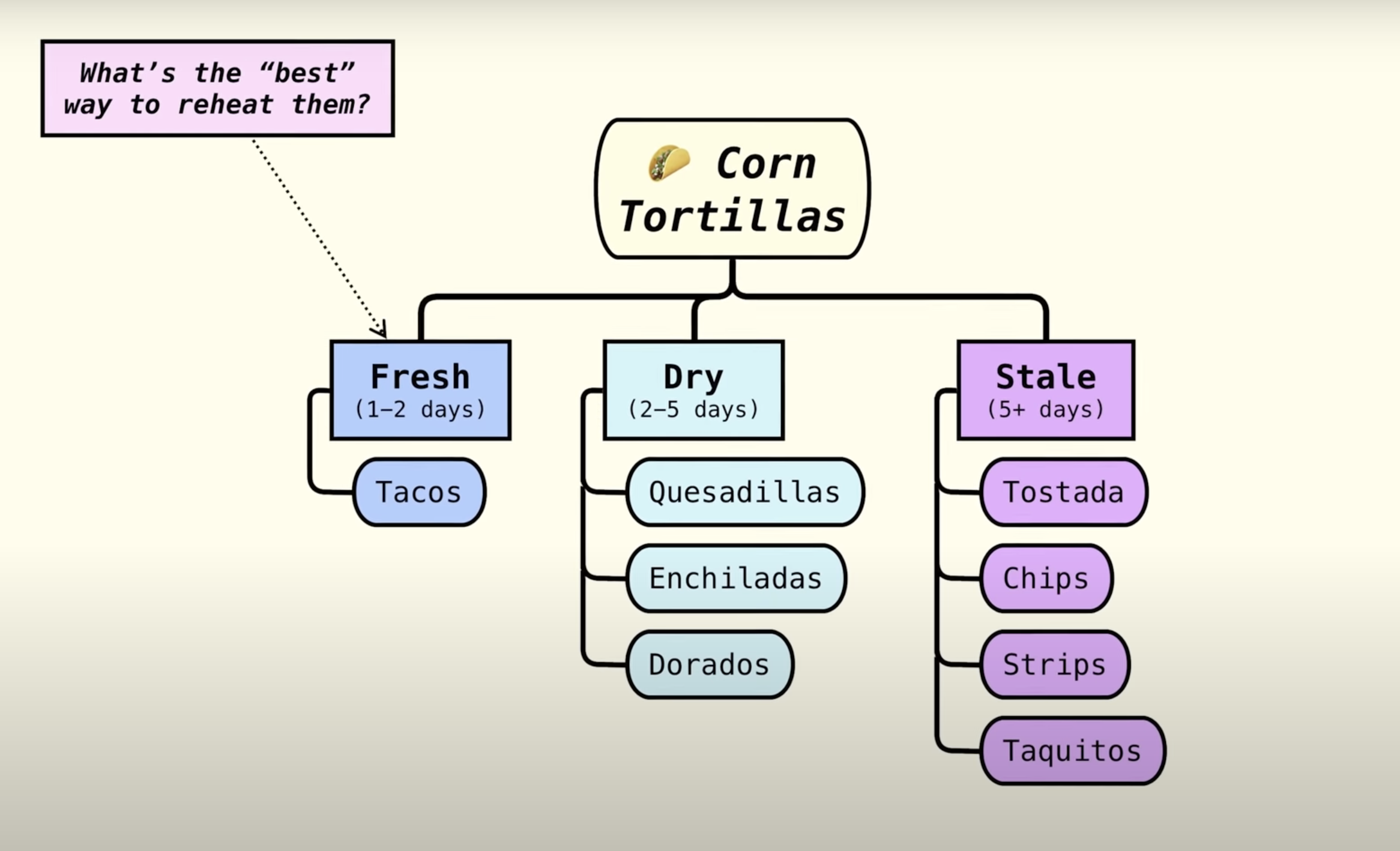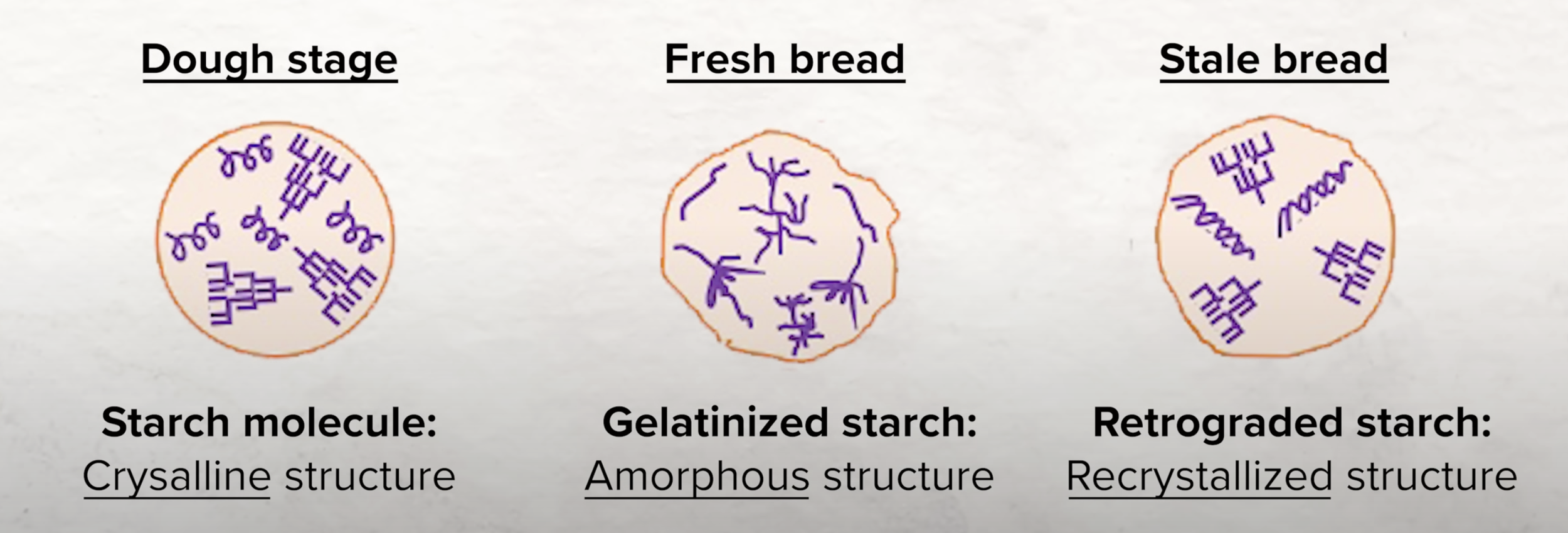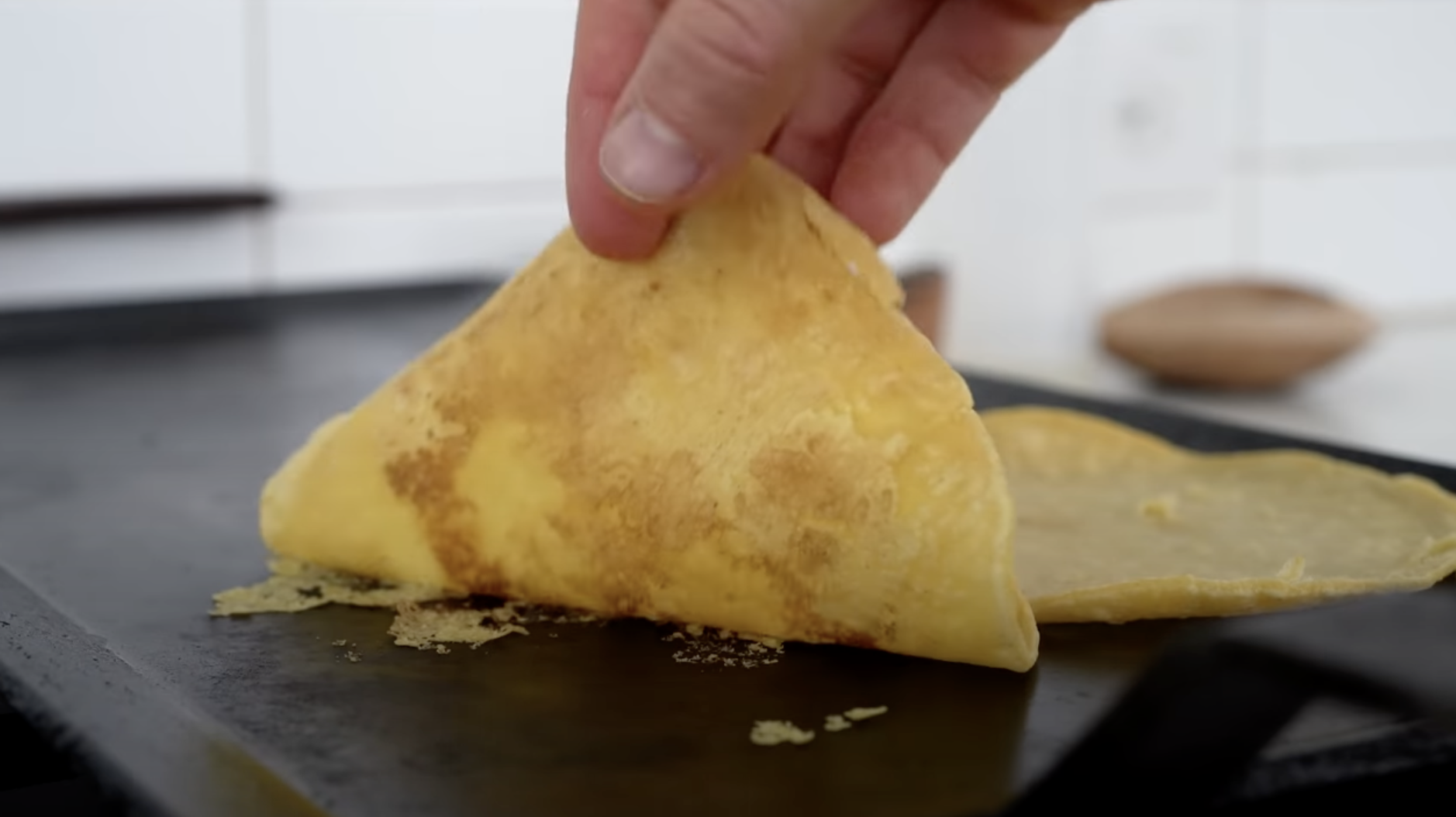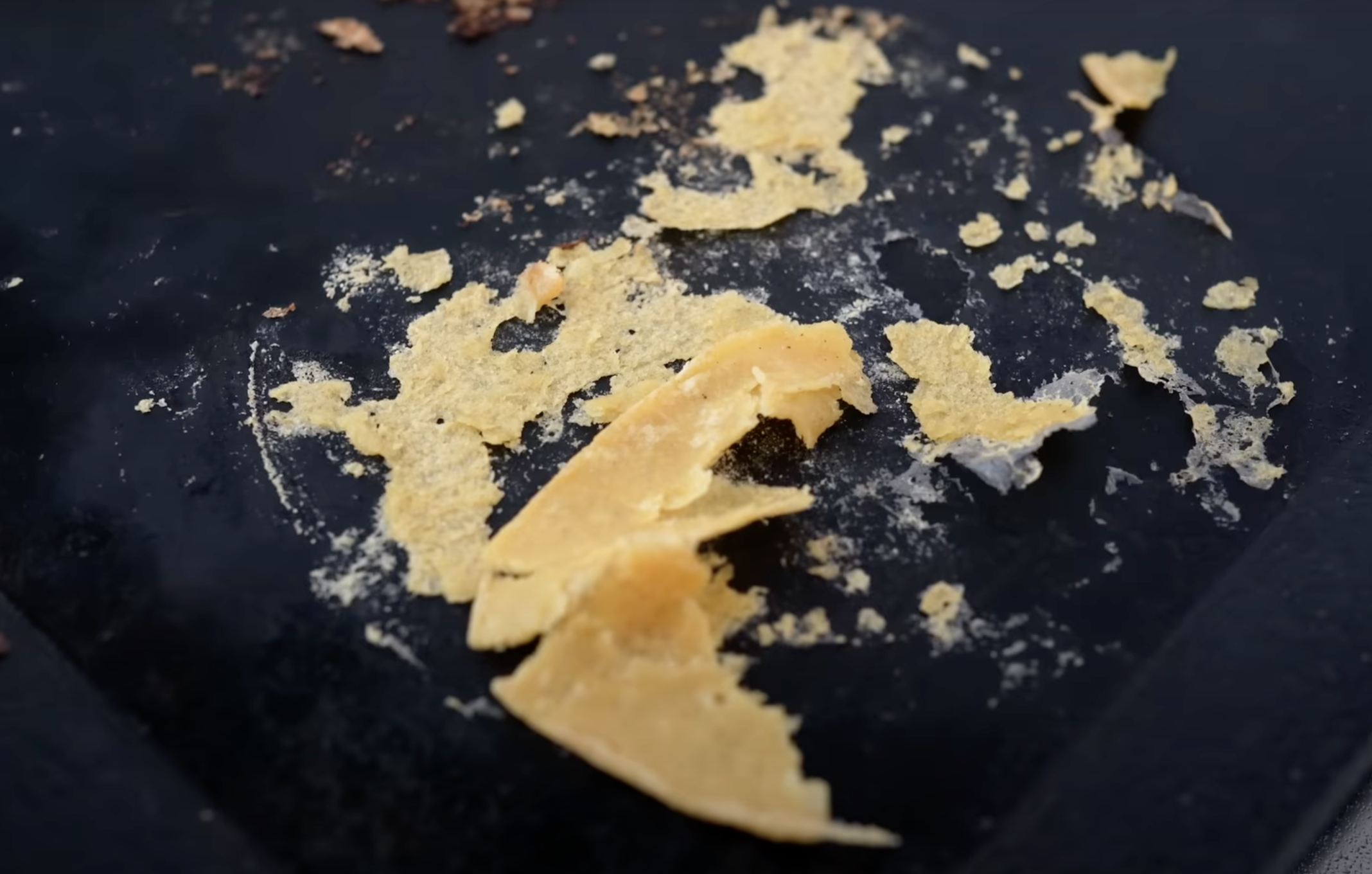The Corn Tortilla Cooking Framework (From Fresh to Stale)
The Corn Tortilla Inspiration Framework
Corn tortillas can be frustrating to buy at the grocery store:
After a day or two they can become dry, crumbly, and fall apart.
They often come in large packs, leaving you with many leftovers that may go to waste.
Despite these shortcomings, here’s why corn tortillas are a worthwhile purchase each week, and how to use them even if they’ve gone stale.
Before diving into different ways to use fresh or dry tortillas, it’s helpful to understand why tortillas go stale in the first place.
Why Do Tortillas Get Stale?
Tortillas (or breads) go stiff and crumbly not because of moisture loss, but because of starch retrogradation, which is the:
Recrystallization of the starch granules
Water migration out of the starch granules
Hardening of the starch granules
…all of which take place over time when starch cools down.
Tortillas are made up of a corn starch structure, which gelates (becomes soft) between 144-162°F.
Example Gelatinization Temperatures:
Wheat
124–140°F (51–60°C)
Barley
124–140°F (51–60°C)
Corn
144–162°F (62–72°C)
At this 144-162°F temperature (think warm serving temperature), the tortillas are their most pliable and the aroma and flavor of the tortillas are more pronounced.
However, once tortillas cool down, the retrogradation or staling process begins, causing them to harden up, especially for traditional or freshly made tortillas.
It turns out that not all tortillas are created equal, though:
Fresh vs. Mass Produced Corn Tortillas
Traditional Tortillas
Traditional tortillas are made with just two ingredients:
Nixtamalized Corn
Water
This creates the masa that is shaped into tortillas and then cooked through.
While fresh tortillas are the standard in places like Mexico City, fresh corn tortillas are much harder to find in the States.
You might be able to find some at:
A local tortilleria
A Latin grocery store
Higher end supermarkets
And of course, you could always buy masa or masa harina and make some fresh.
While freshly made tortillas will have the best flavor and texture, they will dry out and go stale within a day or two since they have no added preservatives.
To serve, you'll need to reheat the tortillas to make them pliable again. See the methods below.
Mass Produced Tortillas
However, the tortillas sold by most supermarkets are mass-produced and designed to have a longer shelf life. Any tortillas that are soft and pliable at the grocery store almost certainly have preservatives and other ingredients added to them.
Take for example this ingredient label:
Most of the added ingredients are there to help the shelf life and pliability of the product, even after days or weeks of sitting.
It’s easy to see the textural difference at room temperature between tortillas with and without additives:
This doesn’t mean the texture of mass produced tortillas is superior to traditionally made or fresh tortillas.
In fact, often they are too soft and are more likely to tear and fall apart when reheated or filled with taco ingredients.
Regardless of the tortillas you buy, here’s how to use them throughout their lifetime:
Using Fresh Tortillas (1-2 Days Old)
Reheat and make tacos!
If you have fresh tortillas, now is the time to take advantage of their most pliable state.
Recipe suggestions:
1) Costra (Crispy Cheese) Tacos
Whatever the taco, you’re going to want to reheat the tortillas so they are soft, flexible, and don’t break under the weight of taco fillings.
Reheating Corn Tortillas
Here are three go-to reheating methods depending on your situation:
For a big stack → the microwave will be the fastest
For most flavor & charring → directly over a gas flame is best
If you don’t have gas → use a pan or a griddle
Notes:
Methods 2 & 3 add a crispier exterior that holds up better to taco fillings, which can add necessary texture and structure to mass-produced tortillas.
If using very dry fresh tortillas, they might benefit from a splash of water while heating them up.
Warning! Mass-produced tortillas with preservatives probably don’t need extra water. We found them to stick and/or fall apart when extra moisture was added.
A few drops of water on each tortilla is all you need to reintroduce moisture. Too much and you risk disaster!
Regardless of the heating method, all tortillas benefit from being steamed together, which makes them even more pliable.
This can be accomplished by steaming them directly over warm fillings, such as cooking meat or veggies, or by stacking them while keeping them warm.
Here are the best ways to do so:
Keeping Tortillas Warm
Here are some options to keep the tortillas warm as long as possible and stave off retrogradation:
Foil pouch*
Tortillero (dedicated tortilla warmer)
Kitchen towel
Dutch oven lined with a kitchen towel
*In our testing, foil kept tortillas warm the longest because it best sealed in steam.
Using Firm Tortillas (2-5 Days Old)
Cook them!
Now even after all of that, after a couple of days, your tortillas are going to continue retrograding and lose moisture.
So instead of trying to make tacos with them, lean into the fact that they are dry and staling.
Try making:
1) Quesadillas
2) Tacos Dorados
3) Enchiladas
All of the above par-cook the tortilla in some way to add texture, so the tortilla doesn’t need to be fresh or pliable in the first place at all.
Using Stale Tortillas (5+ Days Old)
Fry them!
After 5 days or more, depending on the type of tortillas you have, they may become so stale and dry that you can't even fold them in half for a quesadilla without them breaking.
In this case, it's time to remove all the moisture from the tortillas by frying them. You can also use an air fryer or toaster oven for a lower-calorie option.
Here are 4 classic forms, with example recipe ideas:
1) Tostada
2) Tortilla Chips
3) Tortilla Strips
4) Taquitos or Flautas
Final Notes
Instead of throwing out stale tortillas, the key is embracing it’s changing texture.
Whether it’s tacos, quesadillas, enchiladas, tortilla chips, or tostadas, the humble corn tortilla is one of the most versatile ingredients you can add to your shopping list.
Leftover corn tortillas are one of the best things to help you use up other leftover proteins or vegetables you happen to have around.
And if you really can’t use up the tortillas, you can always freeze them in a stack.
Just defrost and heat them back up, preferably on a griddle or over a flame to drive off excess moisture.







